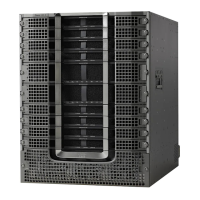PurposeCommand
Identifies a specific IP differentiated service code
point (DSCP) value as a match criterion. Up to eight
DSCP values can be included in one match statement.
match [ip] dscp
Configures a class map to use the specified input
interface as a match criterion.
match input-interface
Configures a class map to use the Real-Time
Transport Protocol (RTP) port as the match criterion.
match ip rtp
Configures a class map to use the specified value of
the Multiprotocol Label Switching (MPLS)
experimental (EXP) field as a match criterion.
match mpls experimental
Matches the MPLS EXP value in the topmost label.match mpls experimental topmost
Specifies the single match criterion value to use as
an unsuccessful match criterion.
The match not command, rather than
identifying the specific match parameter to
use as a match criterion, is used to specify a
match criterion that prevents a packet from
being classified as a member of the class. For
instance, if the match not qos-group 6
command is issued while you configure the
traffic class, QoS group 6 becomes the only
QoS group value that is not considered a
successful match criterion. All other QoS
group values would be successful match
criteria.
Note
match not
Specifies the Layer 3 packet length in the IP header
as a match criterion in a class map.
match packet length
Matches traffic on the basis of the port type for a class
map.
match port-type
Identifies IP precedence values as match criteria.match [ip] precedence
Configures the match criteria for a class map on the
basis of the specified protocol.
A separate match protocol (NBAR)
command is used to configure network-based
application recognition (NBAR) to match
traffic by a protocol type known to NBAR.
Note
match protocol
Configures NBAR to match FastTrack peer-to-peer
traffic.
match protocol fasttrack
Cisco cBR Series Converged Broadband Routers Quality of Services Configuration Guide for Cisco IOS XE
Fuji 16.7.x
12
Modular Quality of Service Command-Line Interface QoS
Elements of a Traffic Class

